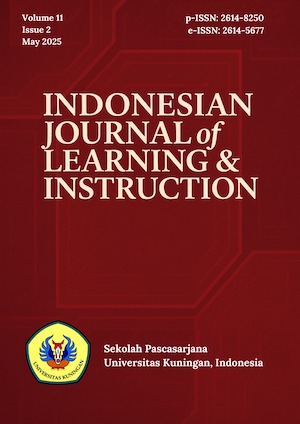STRATEGIES CONSTRAINS IN RENDERING ISLAMIC RELIGIOUS COLLOCATIONS FROM ARABIC INTO ENGLISH
Abstract
This particular study investigates the problems found in the strategies adopted by students in translating certain lexical collocations of the Islamic religious texts. For that purpose, a purposive sample of 41 B.A, English students enrolled in the academic year of 2017-2018 at the Arts College had been selected as participants in this study. Thus, the primary objective of the study is to determine if these Sudanese students faced any problem when translating Islamic religious collocations from Arabic into English. Therefore, the researcher employed the descriptive approach to identify the problems faced by students in using several strategies for translation. As for data collection method, a test, which consisted of specific lexical collocations terms, had been carried out to analyse the obstacles that the students faced when translating Islamic religious collocations terms from Arabic into English. Hence, some main issues that were identified from the findings were reviewed in a wholesome manner and wherever possible, links were made to associate the themes to the literature examined, besides further extending the research scope via comparison with other literature in light of the finding. Finally, some recommendations are given at the end of the research mainly for students to improve their skills in translating Islamic lexical collocations from Arabic into English.References
Abdelwali, M. (2007). The loss in the translation of the Qur’an. Translation Journal, 11(2).
Al-Khanji, R., & Hussein, R. (1999). Assessing English collocational knowledge among advanced learners. Mu’tah Lil-buhuth Waddirasat, 14, 129-159.
Aldahesh, A. (2008). Translating idiomatic English phrasal verbs into Arabic. College of Arts: University of Western Sydney.
Bahumaid, S. (2006). Collocation in English-Arabic translation. Babel, 52(2), 133-152.
Baker, M. (1992 ). In other words: A coursebook on translation. Routledge.
Baker, M. (1992, p.97). In other word: A course book on translation. London, UK: Routledge.
Bekkai, M. (2010). The influence of culture on Arabic/English/Arabic translation of idioms and proverbs.
Carter, R. (2012). Vocabulary: Applied linguistic perspectives. Routledge.
Chebbo, A. A. (2006). Arabic to English translation of Islamic religious texts. American University of Sharjah.
Cowie, A. P. (1981). The treatment of collocations and idioms in learners' dictionaries. Applied linguistics. 2223.
Dalby, A. ( 1998 ). Dictionary of languages: The definitive reference to more than 400 languages. London: A & C Black Publishers.
Dweik, B. S., & Abu Shakra, M. M. (2011). Problems in translating collocations in religious texts from Arabic into English. Linguistics Journal, 5(1).
Dweik, B. S., & Suleiman, M. (2013, p.78). Problems encountered in translating cultural expressions from Arabic into English. International Journal of English Linguistics, 3(5).
Elewa, A. (2014). Features of translating religious texts. Journal of Translation, 10(1), 25-33.
Esposito, J. L. (2004). The oxford dictionary of Islam. Oxford University Press.
Firth, J. R. (1957). Applications of general linguistics. Transactions of The Philological Society, 56(1), 1-14.
Garcia, A., & Francisco. (1996). On translating figurative language from English into Spanish: A perceptual problem. Babel, 42(3), 158-165.
Ghazala, H. (1995). Translation as problems and solutions. Malta: ELGA Publication.
Ghazala, H. (2002). Tarjamatul mustalahatil Islamiati. A paper presented in the symposium on the translation of the holy Quran. Al-Madinatul Munawwaratu: Kingdom of Saudi Arabia.
Halliday, M. A. (1966). Lexis as a linguistic level. In memory of JR Firth. 148162.
Hervey, S. G., Hervey, S., & Higgins, I. (1992). Lehrbuch. Psychology Press.
Ivir, V. (1987). Procedures and strategies for the translation of culture. Indian Journal of Applied Linguistics, 13(2), 35-46.
Jemiriye, T. F. S. E. (2005). Religion: An introductory study. Ado-Ekiti, Nigeria: Petoa Educational Publishers.
Krings, H. P. (1986). Translation problems and translation strategies of advanced German learners of French (L2). Interlingual and intercultural communication. 263-276.
Larson, M. L. (1984). Meaning-based translation: A guide to cross-language equivalence. University press of America Lanham, MD.
Lörscher, W. (1991). Translation performance, translation process, and translation strategies: A psycholinguistic investigation. G. Narr.
Moon, R. (1998). Fixed expressions and idioms in English: A corpus-based approach. Oxford University Press.
Naudé, J. (2002). An overview of recent developments in translation studies with special reference to the implications for Bible translation. Acta Theologica Supplementum 2.
Newmark, P. (1988). A textbook of translation. New York, USA: Prentice Hall.
Newmark, P. (1989 ). Paragraphs on translation. Multilingual Matters Limited.
Nida, E. (1969). Eugene & Charles R. Taber (1969/1982), The Theory and Practice of Translation.
Nida, E. A. (1964). Toward a science of translating: With special reference to principles and procedures involved in Bible translating. Brill Archive.
Olk, H. (2003). Cultural knowledge in translation. ELT Journal, 57(2), 167-174.
Peter, N. (1988). A textbook of translation. New York: TiceHall Press.
Saleh, K. H. A., El–Isa, S., Sameer, E., An, O., & Hirzallah, R. (2011). Translating restaurants' menus from English into Arabic: Problems and strategies.
Schwartz, S. H., & Rubel, T. (2005). Sex differences in value priorities: cross-cultural and multimethod studies. Journal of personality and social psychology, 89(6), 1010.
Shunnaq, A. T. (1993). Patterns of repetition in Arabic forced by morphology with reference to Arabic-English translation. Papers and studies in contrastive linguistics, 2(8), 89-98.
Zughoul, M. R., & Abdul-Fattah, H. (2003). Translational collocational strategies of Arab learners of English: A study in lexical semantics. Babel, 49(1), 59-81.









